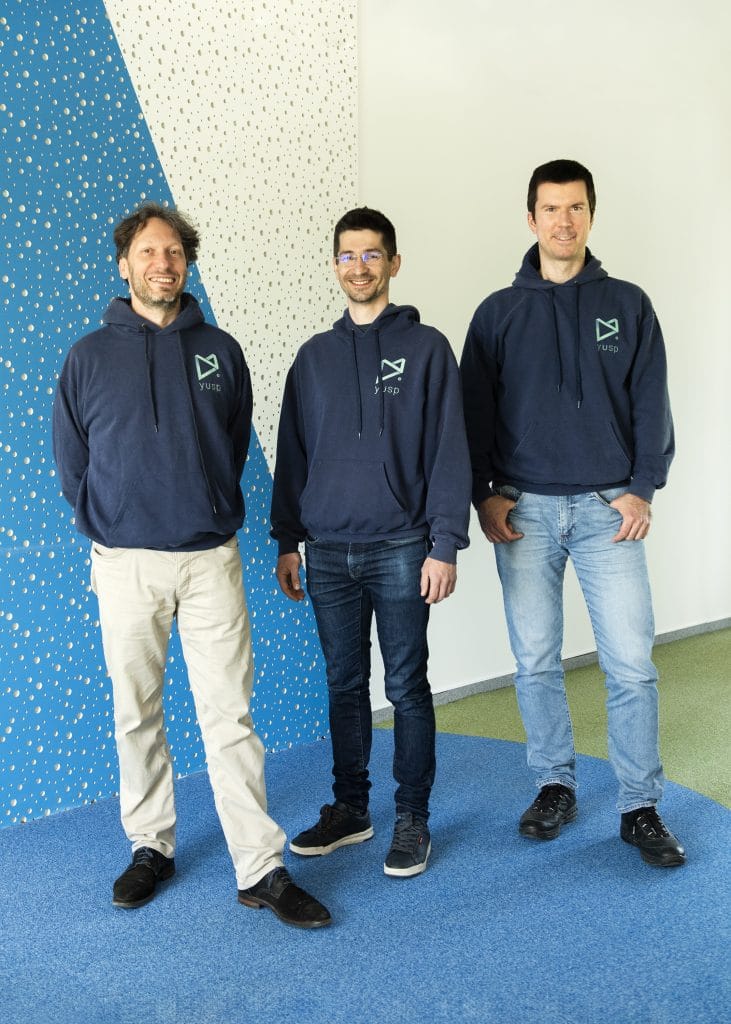I remember living in Israel, 15 years ago when the Netflix Prize was announced — a global competition for any engineering or AI team to try and beat Netflix’s own home grown recommendation performance. Few teams made it.
After 15 years, I’m thrilled to share that we’ll be joining forces with the winning team — by acquiring Gravity R&D.
The acquisition is part of Taboola’s stated goal of investing $100 million annually into R&D. Their headquarters in Hungary will become a new research and development hub for Taboola.
The team at Gravity R&D are some of the best at what they do. Back in 2009, Netflix launched a competition open to anyone who could improve their recommendation algorithm — Gravity R&D’s team won. They were able to improve Netflix’s recommendation algorithm by 10% while up against more than 41,000 teams from 186 countries, including some of the world’s best data scientists and computer engineers.
There was no company better suited to help us succeed in further advancing our AI, our SmartBid technology and our e-Commerce solutions.
I sat down with Domonkos, Gravity R&D’s CEO, for an in-depth conversation about their history, what their technology already brings to the industry, and why we’re thrilled to have found such a strong cultural match.

One of the reasons that we were so impressed with you and your team to begin with was because we heard you won the Netflix content recommendation Prize, a public competition to find a team to improve Netflix’s content recommendation technology. It’s quite a feat to be able to say you improved Netflix’s content recommendations by 10%. Can you talk about that contest a bit? What was your challenge and what did the team achieve?
Through Netflix’s competition we created the foundation for Yusp, our recommendation technology. It was long and arduous — it took almost three years to win.
Near the end of the competition, many teams started banding together for a better chance of winning. We lead one of the two final standing teams that tied for first place. The other team submitted 20 minutes before us, which was a blessing, because it meant that we got to take the work we had done for the competition and build a company of our own.
During the contest, we were approached by many investors and companies that wanted us to help improve recommendations on their websites, and one of those companies was willing to pay for our services. That one client led us to establish Gravity R&D as an official company.
So, the contest landed you your first client, generated buzz in the investment community, and essentially launched Gravity R&D. What did Gravity R&D become, and what does your technology, Yusp, look like today?
Winning Netflix’s competition was like receiving a stamp of acknowledgement from the industry. Before the contest ended, we had already been approached by several investors. After we won, we received some media coverage in a top tier outlet here in Hungary, which led us to our first serious investor.
He had a website he wanted to personalize for visitors, and his website became one of the first real-world applications for our personalization solution. It was a hard task — his website receives a lot of traffic — but the challenge allowed us to scale the technology we had built in the Netflix competition early on in our history.
The code that we implemented on that site in 2010 is still the foundation of our personalization engine, Yusp. While there have been many improvements, added features, and optimizations, the core technology has continued to serve us well, at scale.
You’re working directly with companies of so many types to personalize their user’s experience, and you’re really good at it. What types of companies are you working with today? Can you give an example of a website that you guys power, and the impact you’ve made?
One of the implementations I’m most proud of is our work with N11, a large online marketplace in Turkey that’s similar to eBay.
Their website has so many different placements, recommendation boxes and locations where personalized offers need to be displayed to the end user. We’re able to fill all of those slots with personalized recommendations that meet N11’s most important goals.
Typical key performance indicators (KPIs) that we optimize for are things like click-through-rates (CTR) and high potential to purchase. Our algorithms do the math to score all available products based on whether or not they’re relevant to a given user in a certain location at a certain time.
The Yusp Dashboard (Dash) allows our clients, and us, to fine-tune those product recommendations manually if needed, and rule out inappropriate content.
Our work for N11 required 25 different algorithms for 62 placements, and resulted in a 14.62% uplift in revenue generated from the homepage, and a 10.59% uplift in revenue generated from product pages.
We’re so excited to have you and the entire Gravity R&D team on board at Taboola. People and culture mean everything to us, and with such an amazing group of people, I know there was no company better suited to help us further improve our recommendation engine. How are you feeling about our future together?
I was thrilled to discover that there was such a strong cultural match between our two teams. Both Taboola and Gravity R&D have retained a sort of startup culture with a lot of flexibility and attention paid to their employees.
I feel good knowing that we’re becoming part of a company that realizes employees are the core value of what makes a company different from another, not just its product. I’m convinced that this is the right acquisition milestone for Gravity R&D and our team.
Not many startups get acquired, and I’m proud that we’re one of the few in Hungary that was able to achieve this fate. I hope our journey can serve as a role model for other companies and inspire them to be successful too.